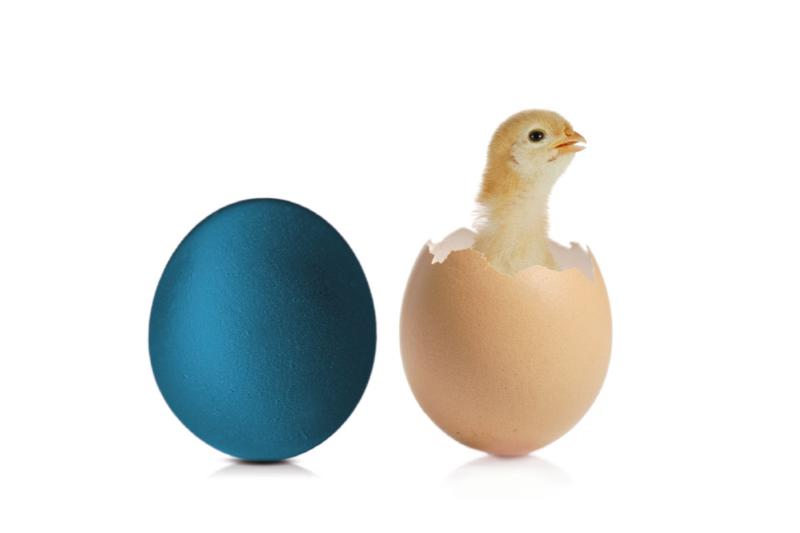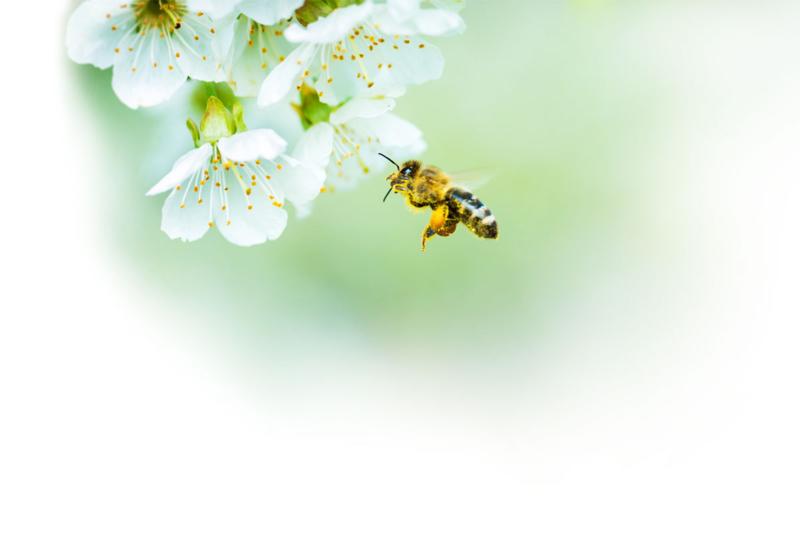The Farmer looks at three inventions, plus six others, which were pitched to investors as part of the ON Accelerate5 Demo Day in Brisbane in May. Part of the CSIRO’s On Innovation program, Accelerate commenced in 2015 to bring scientists and investors together to turn innovations into a commercial reality.
.jpg)
ON Innovation executive manager David Burt. Source: Supplied by the CSIRO.
“It is important to push projects from the lab into the outside world. We need these ideas to make the leap because we don’t have a future without them. We’ve built a world that consumes our planet faster than we can replenish it – and creates a population that expects to maintain its current standard of life,” says ON Innovation executive manager David Burt.
1. The egg breakthrough

The CSIRO hope to humanely take male chicks out of egg production industry. Source: iStock.
It’s estimated up to 24 million eggs are incubated to produce chickens for egg production in Australia each year, but only about 12 million grow up to be layer hens. Half the chickens hatched are male and the reality of chicken production is that male chicks have little room in the food chain. They cannot lay eggs and don’t convert their feed to muscle efficiently, so current industry practice is to euthanise all male chicks under RSPCA guidelines.
Aside from the ethical issue of male chick culling, there is the labour intensity of identifying the sex of the hatchlings and then disposing of the euthanised chicks. This contributes to the total production cost of each egg.
The
CSIRO has found a way to eliminate the euthanasia process and is on the verge of making it a commercial reality in three years. It’s called Adaptive Eggs and CSIRO project leader, research scientist Dr Mark Tizard, who has been working on the project for 10 years, says it is a method of identifying male eggs at point of lay.
%20(1).jpg) CSIRO project leader, research scientist Dr Mark Tizard, who has been working on the project for 10 years. Source: Supplied by the CSIRO.
CSIRO project leader, research scientist Dr Mark Tizard, who has been working on the project for 10 years. Source: Supplied by the CSIRO.
“We’ve used a biotechnology approach by placing a chromosome marker which only appears in the male egg,” says Dr Tizard. This genetic marker is designed to create a fluorescent protein that glows if a UV light is shined onto it through the shell.
“A laser detector can then be used to find that marker during the analysis process that each egg goes through and the male eggs can then be removed.” The female eggs – the ones that don’t glow – then proceed to the incubator.
While this requires genetic modification, Dr Tizard is swift to point out that it only applies to the male egg. Female eggs are not affected in any way and regulators recognise the concept as safe.
“We understand that there can be an issue with concerns surrounding genetic modification so safety is our utmost priority,” he says.
“The benefit for the chicken producer is enormous. We estimate that the cost of production will drop from about 10 cents per egg to between four and six cents per egg,” says Dr Tizard.
The savings will come through halving demand on the incubation process, individual handling of each chick and disposal of the male chicks. “We are mindful that the people who handle and sex the chicks, those skills won’t be needed, but the potential to process twice as many eggs means there will be more work,” Dr Tizard says.
His team is also researching ways to add value to the male eggs separated during the process. Egg whites and part of the yolk could be used in food products, eliminating much of the waste component. Human influenza vaccines are generally grown in fertilised chicken eggs and the pre-hatched male eggs could be used to help produce seasonal flu vaccines.
“This biotechnology is improving sustainability, ethics and ultimately profitability,” Dr Tizard says.
With an estimated seven billion eggs wasted worldwide a year, there is a great deal of interest in commercialising the technology. In the United States,
the Foundation for Food and Agriculture Research has put up a US$6 million (about $8.6 million) prize for a technology that can fix this global problem, and Adaptive Eggs has thrown its hat in the ring.
2. The buzz with bees
 Facial recognition technology could be developed to identify exotic or diseased bees. Source: iStock.
Facial recognition technology could be developed to identify exotic or diseased bees. Source: iStock.
The Varroa destructor mite has decimated honey bee populations around the world and Australia is one of the few countries without the deadly parasite. The risk it poses led husband and wife team Kate and David Lyall to come up with an invention under their Bee Innovative banner.
Kate is a nuclear medicine scientist and David is a molecular imaging researcher and third-generation beekeeper.
%20(1).jpg)
Kate and David Lyall are innovating bee keeping. Source: Supplied.
“Many experts state it is a matter of when, not if, Varroa arrives in Australia so we were discussing whether we would have a future in beekeeping,” Kate says. “This was the genesis of our technology to protect Australian agriculture from Varroa destructor.”
The Lyalls have adapted facial recognition technology to identify exotic or diseased bees, which then alerts biosecurity officers. BeeID is designed to be installed near ports as a frontline defence against foreign invasion by exotic bee species that might carry Varroa destructor.
“It’s a monitoring station with a camera which attracts bees,” Kate says. “The station can process an image of a bee and if it is an exotic species or has Varroa destructor, the authorities can be alerted in real time.”
The success of the project in the CSIRO’s innovation accelerator program gave rise to other ideas, including a profitable tool for farmers relying on pollination. “We’ve developed a radar-like sensor to track bees,” Kate says. “BeeDar can map where bees are working in an orchard, identifying areas of poor pollination in near-real time.”
A drone flies over an orchard with the BeeDar unit attached, set to a particular wavelength capable of detecting a bee’s size and density.
“A great saying is if you can measure it, you can manage it, and pollination could not be effectively managed until now,” Kate says. “This technology means you can measure pollination by seeing where bees are working in an orchard early during the flowering period. By knowing where bees are and, more importantly, are not, you can manage hives to promote pollination and maximise production.
“We completed a trial in blueberries last year and had awesome results which has led to a contract with a farm in North America.”
According to the
Food and Agriculture Organization of the United Nations, improved pollination has the potential to improve global food production yield by up to a quarter. BeeDar is a tool that could help make that happen.
 Tactile sensor technology is being tested in Australia. Source: Supplied.
Tactile sensor technology is being tested in Australia. Source: Supplied.
Robots can be programmed to be clever. The problem is they still can’t match a human’s gentle hands that can carry out delicate tasks with a second’s prompting from the brain.Tactile sensor technology researcher Dr Heba Khamis, of the University of NSW, is striving to make robots capable of the most delicate operations such as picking fruit.
%20(1).jpg) Dr Heba Khamis from the University of NSW is developing robotic sensors to use for picking fruit. Source: Supplied.
Dr Heba Khamis from the University of NSW is developing robotic sensors to use for picking fruit. Source: Supplied.
“Robots are not as advanced as we might imagine from science fiction, they are programmed for prescribed tasks,” Dr Khamis says.
“An unstructured environment can be a real problem for robots and we’re looking at how they interact with objects they haven’t seen before, as we do by using our sense of touch.”
Her team has developed sensor nodules that would be positioned on a gripping surface of a robotic ‘hand’ to determine the correct amount of pressure required to grip an object.
“We developed a sensor which can understand friction and slip. It measures three-dimensional force, deflection and vibration and then measures torque slip and friction,”
Dr Khamis says. “We’ve been at it for almost five years and developed three prototypes, and now have one which can efficiently pick up simple objects of varying weight.”
The team’s next challenge is speed. “A human hand has 17,000 [touch] receptors and our brain can integrate and process all the information from these and millions of other receptors all over the body in real time and respond to that information with great speed and accuracy,” she says. “Trying to replicate that is difficult. At the moment we have 25 sensors with a basic hobbyist microprocessor for a simple, slow lifting task.”
However, the scientist says she is confident that with advanced computing technology and sophisticated algorithms for processing the information, tactile robotics will become a reality.
RELATED ARTICLES:
When will agriculture's robotic revolution arrive?
Milk matters: the dairy farmers innovating through education
Maggots: The livestock feed no-one saw coming